
Recipe: Fresh orange custard boasts old-fashioned flavors
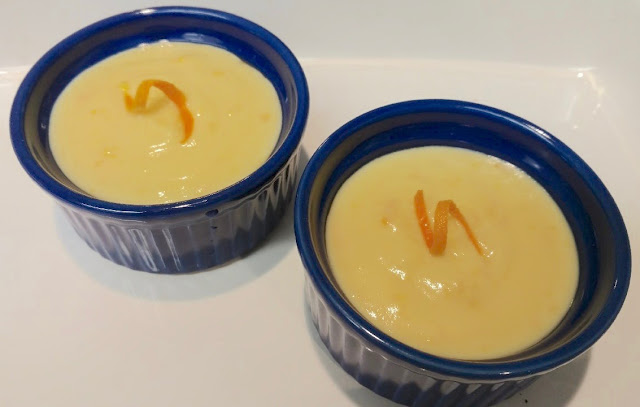
(Photos: Debbie Arrington) |
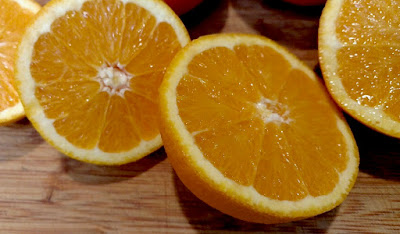
|
If you like the flavor of fresh oranges, this old-fashioned custard is for you.
I love fresh oranges, which is a good thing: We have backyard citrus trees and a steady supply of sweet winter fruit.
In search of more ways to enjoy oranges, I recalled that my grandmother occasionally made an orange pudding that could double as a pie filling; it wasn’t chiffon, it was custard.
While that specific recipe still eludes me, this one comes close. The orange segments (an idea borrowed from “Joy of Cooking”) give it a fresh taste, added texture and a lot more orange flavor. The fruit is like buried treasure hidden under the rich topping.
Take some extra time to “supreme” the orange segments. Remove all the fibrous membranes by slicing the fruit sections out instead of pulling the sections apart. The trick is to use a sharp knife and cut along each membrane where it meets the juice sacs. Forming a wedge, cut along one membrane; do the same on the other side of that segment. Then, pop the segment out. It’s handy to work over a bowl to catch the segments and juice. Or you can use a cutting board to steady the fruit.
The orange supremes look pretty at the bottom of a glass bowl topped by the silky custard speckled with orange zest.
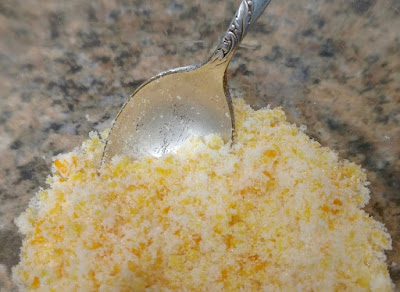
|
Fresh orange custard
Makes 4 servings
Ingredients:
2 tablespoons orange zest
1/3 cup sugar
4 oranges
2 cups low-fat milk
¼ cup heavy cream
3 egg yolks
2 tablespoons cornstarch
1/2 teaspoon vanilla extract
Instructions:
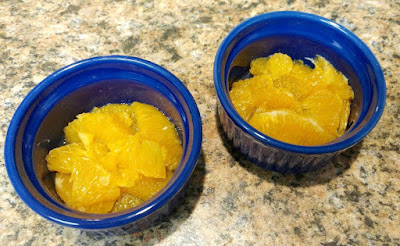
The drained orange sections are spooned into the bottom
of the ramekins (or bowl).
|
Mix together orange zest and sugar. Set aside.
Over a large bowl, peel oranges with a sharp knife, cutting away the white pith and letting any juice collect in the bowl. Section the oranges supreme-style, slicing along the membranes; remove any seeds. Put the orange sections in the bowl and squeeze any remaining juice from the membranes over the sections. Set aside.
In a saucepan over medium heat, mix together milk and cream. Scald the milk (heating until little bubbles form around the edges), stirring often so it doesn’t stick.
Meanwhile, in the top of a double boiler, beat the egg yolks. Stir in the hot scalded milk.
Add cornstarch to the zest-sugar mixture; stir into custard. Stir in vanilla extract.
In the double boiler over medium heat, cook the custard until thickened, stirring often (it takes about 7 minutes). Remove from heat and let cool a few minutes.
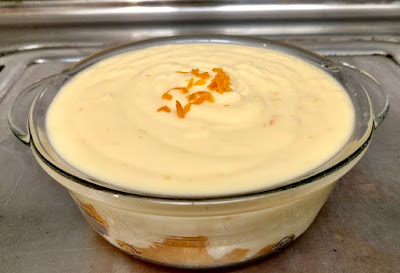
Place spoonfuls of orange segments at the bottom of a glass dish or into individual ramekins. Spoon custard over the orange segments. Chill.
Comments
0 comments have been posted.Sacramento Digs Gardening to your inbox.
Food in My Back Yard Series
May 6: Maintain soil moisture with mulch for garden success
April 29: What's (already) wrong with my tomato plants?
April 22: Should you stock up on fertilizer? (Yes!)
April 15: Grow culinary herbs in containers
April 8: When to plant summer vegetables
April 1: Don't be fooled by these garden myths
March 25: Fertilizer tips: How to 'feed' your vegetables for healthy growth
March 18: Time to give vegetable seedlings some more space
March 11: Ways to win the fight against weeds
March 4: Potatoes from the garden
Feb. 25: Plant a fruit tree now -- for later
Feb. 18: How to squeeze more food into less space
Feb. 11: When to plant? Consider staggering your transplants
Feb. 4: Starting in seed starting
Sites We Like
Garden Checklist for week of May 11
Make the most of the lower temperatures early in the week. We’ll be back in the 80s by Thursday.
* Plant, plant, plant! It’s prime planting season in the Sacramento area. Time to set out those tomato transplants along with peppers and eggplants. Pinch off any flowers on new transplants to make them concentrate on establishing roots instead of setting premature fruit.
* Direct-seed melons, cucumbers, summer squash, corn, radishes, pumpkins and annual herbs such as basil.
* Harvest cabbage, lettuce, peas and green onions.
* In the flower garden, direct-seed sunflowers, cosmos, salvia, zinnias, marigolds, celosia and asters. (You also can transplant seedlings for many of the same flowers.)
* Plant dahlia tubers.
* Transplant petunias, marigolds and perennial flowers such as astilbe, columbine, coneflowers, coreopsis, dahlias, rudbeckia and verbena.
* Keep an eye out for slugs, snails, earwigs and aphids that want to dine on tender new growth.
* Feed summer bloomers with a balanced fertilizer.
* For continued bloom, cut off spent flowers on roses as well as other flowering plants.
* Add mulch to the garden to maintain moisture. Mulch also cuts down on weeds. But don’t let it mound around the stems or trunks of trees or shrubs. Leave about a 6-inch-to-1-foot circle to avoid crown rot or other problems.
* Remember to weed! Pull those nasties before they set seed.
* Water early in the day and keep seedlings evenly moist.